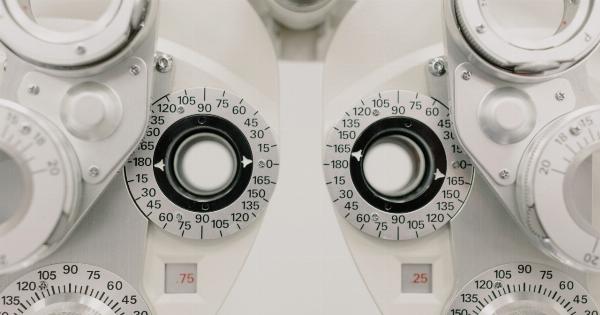Alzheimer’s disease is a degenerative and irreversible brain disorder that affects 44 million people worldwide. It is currently the most common form of dementia, and its prevalence is expected to triple by 2050.
Early diagnosis and treatment of Alzheimer’s is critical to improve patients’ quality of life and avoid further deterioration. Eye cell diagnosis is a promising method for identifying Alzheimer’s disease and has gained increasing attention in the medical community.
What is Alzheimer’s Disease?
Alzheimer’s disease is an irreversible and progressive brain disorder that affects memory, thinking, and behavior. The disease is named after Alois Alzheimer, who first described the condition in 1906.
Alzheimer’s disease is caused by the accumulation of two abnormal proteins in the brain: beta-amyloid and tau. Beta-amyloid forms sticky plaques between nerve cells, while tau creates twisted fibers within cells, which disrupts their ability to communicate and eventually kills them.
Symptoms of Alzheimer’s Disease
The symptoms of Alzheimer’s disease usually start with mild memory loss, such as forgetting recent conversations, appointments, or names of people. As the disease progresses, other symptoms appear, including:.
- Difficulty in completing familiar tasks
- Confusion about time and place
- Changes in mood and personality
- Trouble communicating
- Loss of interest in activities
- Wandering or getting lost
- Difficulty walking or doing other physical activities
Traditional Methods of Diagnosing Alzheimer’s Disease
Currently, Alzheimer’s disease is primarily diagnosed through interviews with patients, examinations of their medical history and symptoms, and cognitive testing, such as the Mini-Mental State Examination.
These methods can be subjective and are not always accurate, especially in the early stages of the disease when symptoms are mild or absent.
Imaging techniques, such as computed tomography (CT) scans or magnetic resonance imaging (MRI), can also be used to detect changes in the brain associated with Alzheimer’s, such as brain atrophy or shrinkage of the hippocampus, which is responsible for memory formation. However, these techniques are expensive, require sophisticated equipment, and are not convenient for routine screening or monitoring of the disease.
Eye Cell Diagnosis
Eye cell diagnosis is a relatively new diagnostic method that uses optical imaging to examine the retina, which is a part of the central nervous system.
The retina contains nerve cells that are similar to those found in the brain and are accessible for examination without invasive procedures. One of the earliest signs of Alzheimer’s disease is the accumulation of beta-amyloid in the brain, which can also be detected in the retina.
Accumulations of beta-amyloid in the retina can be identified through High-Resolution Retinal Imaging (HRRI), which uses specialized cameras and software to visualize individual nerve cells and track changes over time. Research has shown that HRRI can detect beta-amyloid deposits in the retina with high specificity and sensitivity, even before symptoms of Alzheimer’s disease appear.
Advantages of Eye Cell Diagnosis
The advantages of eye cell diagnosis for Alzheimer’s disease are numerous. Firstly, it is a non-invasive, safe, and comfortable procedure that does not require radiation exposure or sedation.
Secondly, it is relatively cheap, compared to other imaging techniques, such as MRI. Thirdly, it can be performed in an outpatient clinic and does not require hospitalization.
Fourthly, eye cell diagnosis can detect Alzheimer’s disease at an early stage, even before symptoms appear, which can improve the chances of successful treatment and management. Finally, eye cell diagnosis can detect beta-amyloid deposits in the retina, which can also indicate the presence of Alzheimer’s disease in the brain, potentially allowing earlier intervention before extensive damage occurs.
Challenges of Eye Cell Diagnosis
Despite its many advantages, eye cell diagnosis also faces some challenges. Firstly, there is currently no cure for Alzheimer’s disease, which means that early diagnosis may not significantly improve patients’ outcomes.
Secondly, the detection of beta-amyloid in the retina does not necessarily mean that the patient has Alzheimer’s disease, as beta-amyloid is also found in healthy individuals. Thirdly, eye cell diagnosis requires specialized equipment and trained personnel, which may not be widely available.
Conclusion
Alzheimer’s disease is a devastating condition that affects millions of people worldwide, and its prevalence is on the rise.
Early diagnosis and treatment are critical to improving patients’ quality of life and avoiding further deterioration. Eye cell diagnosis is a promising method for identifying Alzheimer’s disease and can detect beta-amyloid deposits in the retina with high specificity and sensitivity.
While eye cell diagnosis faces some challenges, it also offers many advantages, such as non-invasiveness, affordability, and the ability to detect the disease at an early stage. With further research and development, eye cell diagnosis may become an essential tool in the fight against Alzheimer’s disease.





























